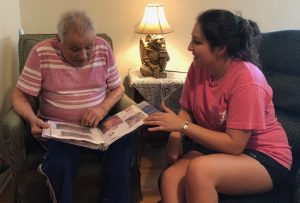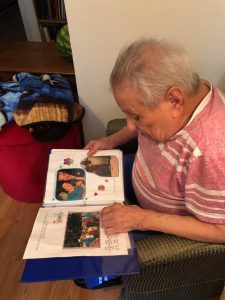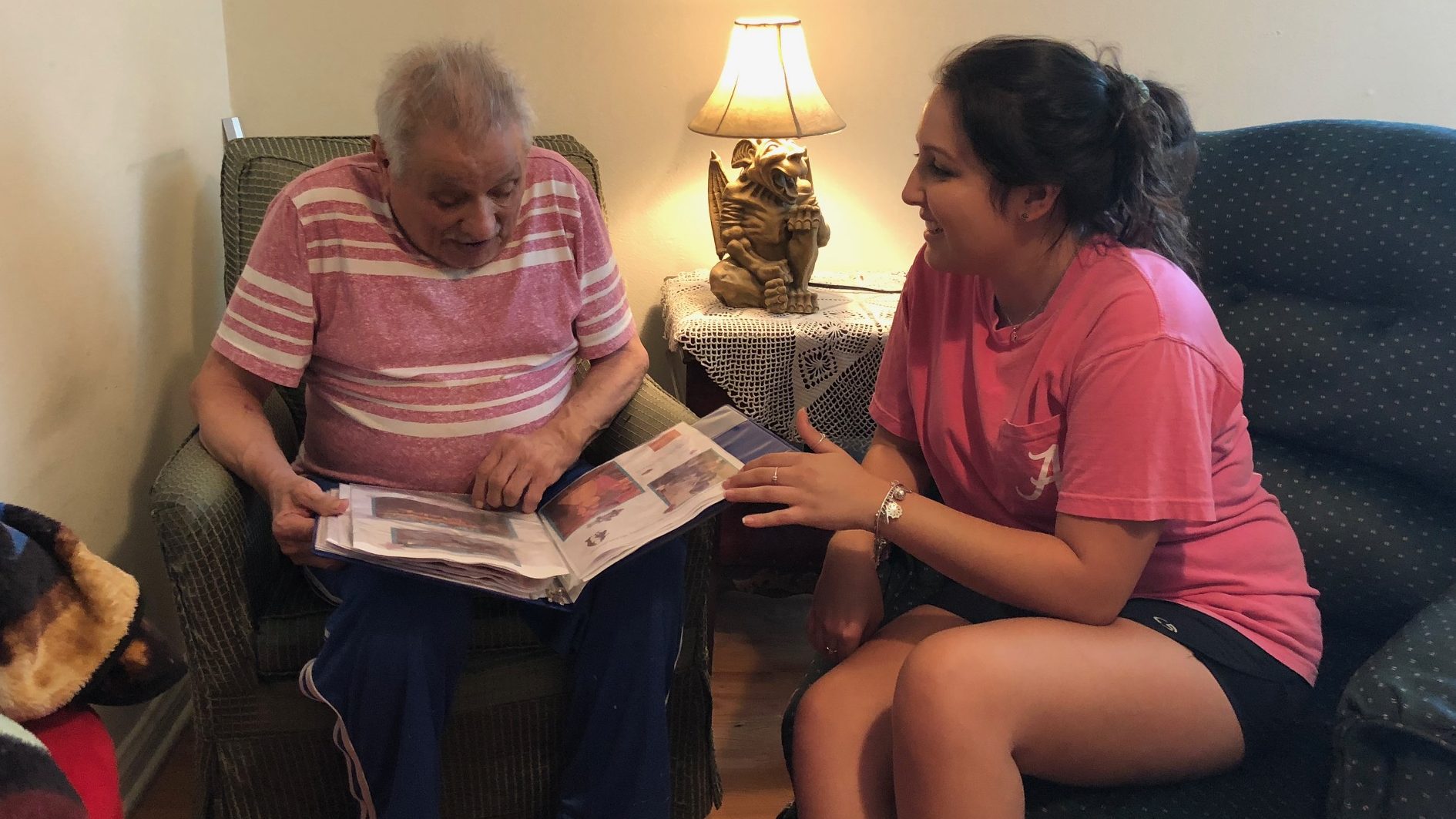When most people think of augmentative and alternative communication (AAC) devices, they think of Stephen Hawking’s high-tech communication aid that gave the famous late theoretical physicist his voice.

Michaela Howell, a 23-year-old native of Angleton, Texas, who’s a graduate student in the department of communicative disorders, created a no-tech device in her AAC course for her granddad, Jesus “Chuy” Ramirez, who has dementia and Alzheimer’s disease.
“I decided to make a memory book for my granddad who has dementia and Alzheimer’s, which has gotten worse since he was diagnosed six to seven years ago,” she said.
“I took a one-inch binder and I put no more than two photos on each page with statements on it that state who he is, who is wife of nearly 60 years is and who the people in the book are. The photos of her are from their wedding, anniversary and other events. I picked mostly pictures of her because she is the one who he spends the most time with.”
The other photos in the memory book are of Ramirez’s siblings, children, grandchildren, him in his barber uniform, him working on the truck he loved, and other things he likes to help him remember the important people and events in his life as his disease progresses.
It took Howell about two to three weeks to get the photos and assemble the device.
She gave it to him as a Christmas gift. She said he really likes it and gets excited whenever he looks at it.
“Just having those old pictures and recent pictures draws him in,” she said. “He still remembers all of that. It’s very much a redirection technique, so when he is wandering around the house my grandma, who is his full-time caregiver, can use it to help him.

“Once I learned that AACs could work with people with dementia and Alzheimer’s, I wanted to make one. It’s really nice to know that there are things we can do to help this process.”
Kandis Chatman, a clinical supervisor and instructor in the department of communicative disorders, said no-, low- and mid-tech AAC devices are all “static display” and limited to the information that is preprogrammed.
These intervention tools may be useful to say “hi” or “I like candy” and for other simple and limited ways of communicating.
High-tech devices are “dynamic display” systems that are similar to a computer, she said. These systems have the ability for robust language to be used to formulate novel utterances and to engage in conversation. Examples may be apps on an iPad or a dedicated communication device from a company.
“All systems are used to improve functional communication and increase independence,” Chatman said. “The focus of speech/language therapy for individuals with dementia is to enhance their residual strengths at each stage.
“In this situation, a memory book was created as an AAC intervention to increase the quality of conversation with communication partners. A memory book can also increase the number of utterances used during conversation.”
